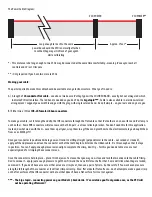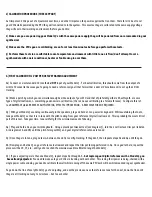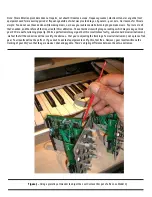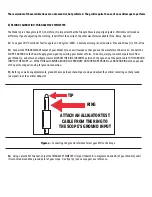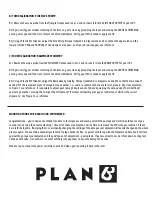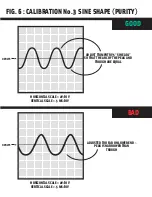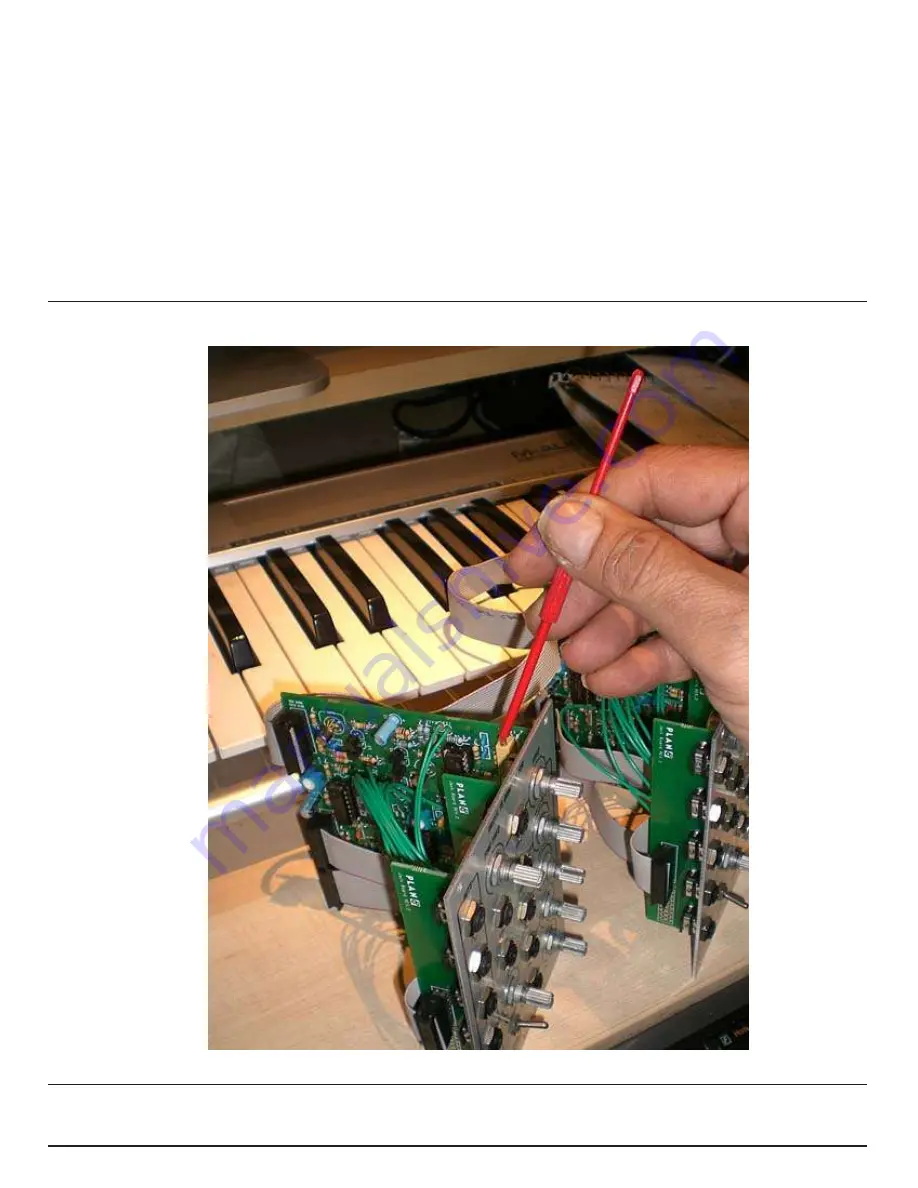
Note: This calibration procedure does not require, nor should it involve a scope, frequency counter, electronic tuner or any other test
equipment used for measuring period or frequency outside of what was provided to you by nature...your ears. Our reasons for this are
simple: You do not use these devices while making music, nor does your audience while listening to you make music. Your ears are all
that’s needed, and therefore all that required for this calibration. These test devices will give you readings which may make you think
your VCO are not functioning properly. While a perfectionist may argue that this constitutes a faulty, sub-standard musical instrument,
we feel that all these devices will do is verify the obvious - that you’re adjusting the tracking of a musical instrument, not a piece of lab
gear. Your results will not be perfect. If you wish to use test equipment to verify this, feel free. However, your results will tune the
tracking of your M15’s so that they are musical, phat and payable. There’s a big big difference between these two extremes.
Figure 3 -
Using a placstic pot tweeker to adjust the 1 volt/octave trim pot of a Rev 1.xx Model 15


